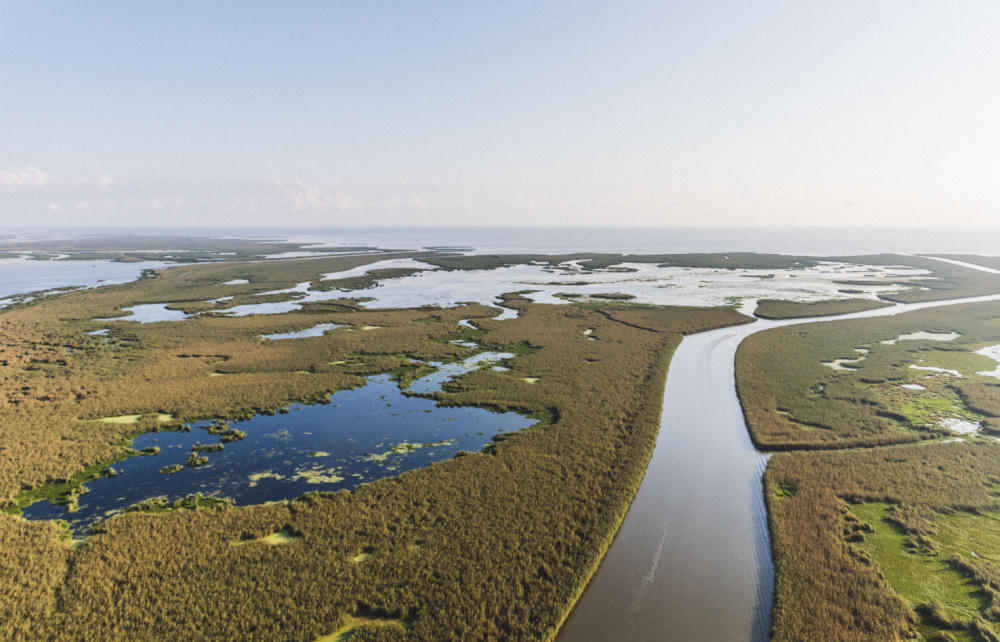
HOUSTON—Talos Energy CEO Tim Duncan discussed his company’s transition into both an offshore E&P and carbon capture operator at this year’s Offshore Technology Conference (OTC).
Just hours after Chevron announced it was joining Talos Energy’s Bayou Bend carbon capture and sequestration (CCS) project, Duncan explained how Talos wanted to be an early player in the CCS space because of its vast seismic database in the Gulf Coast region plus the relationships with local policymakers and landowners the company has fostered operating nearly two decades as a Gulf of Mexico oil producer.
“We know who we are,” Duncan told OTC attendees during a keynote address on May 3. “We’re oil and gas guys, there is no doubt about that. We want to build as big of a company as possible that can produce reliable energy every day. When we looked into our skill set, we realized we can do more than that.
“When we started looking at the skills we have at our company, we started asking ourselves, can we participate in a low-carbon economy? We know it’s coming, and we’re not running away from that. There is no doubt the majors are doing it, and they should do it—they’ve got the R&D, they’ve got the tech, they’ve got some of the smartest people in the world and they should participate in it. But it doesn’t mean a company like ours can’t participate in it too. But where is our niche?”
Duncan said the company considered a variety of options for its latest capital outlay projects, including offshore wind on the East Coast, which ultimately proved to be too costly.
“We thought about CCS, and we looked at our skills as geologists, project managers, drillers, and we realized we can be involved in that, and we can be involved in that right now,” he said.
Talos, along with partner Carbonvert, jumped into CCS when it earned the winning bid in a 2021 request for proposal offered by the Texas General Land Office for a carbon storage site along the Gulf Coast. That winning bid ultimately became the Bayou Bend CCS project.
Bayou Bend CCS is one of four CCS projects Talos Energy is currently involved with and encompasses over 40,000 gross acres and, based on Talos and Carbonvert’s preliminary estimates. The project could potentially sequester 225 million to 275 million metric tons of CO₂ from industrial sources in the area, according to Talos Energy. First injection is estimated for 2025.
Under the terms of the venture with Chevron, Talos and Carbonvert would contribute the Bayou Bend CCS lease to an expanded joint venture (JV) including Chevron in exchange for consideration of cash at closing and capital cost carry through project financial investment decision. Upon closing, equity interests in the JV would be 25% Talos, 25% Carbonvert and 50% Chevron, and Talos would remain the operator.

Other Talos CCS projects include the Freeport LNG point source project with Storegga, with a capacity of 24 million metric tons and first injection estimated for late 2024; the River Bend hub, with a capacity of more than 550 million metric tons, with project partners Storegga and EnLink, and the Coast Bend point source project with Howard Energy, with storage estimated up to 100 million metric tons.
Overall, Talos Energy has a CCS portfolio of 800 million metric tons of possible CO₂ storage capacity.
As Duncan explained, Talos’ journey into a CCS operator ultimately began with their expertise in shallow-water production, and their vast database of seismic.
“We believe we can participate in areas where we know the biggest and most sophisticated companies in the world are going to be there, but we can be there too, and the thing goes for CCS,” he said. “We’re big seismic guys. We have over 90 million acres of seismic in the Gulf of Mexico, there isn’t much we don’t have covered up.”
Duncan said that going forward, the focus of the company’s capital outlay will be on debt reduction and CCS.
“We want to generate free cash flow and our view is, does it make more sense to allocate capital into what’s next rather than what’s now?” he said. “And what’s next is CCS.”
MORE OTC 2022 CONTENT:
The Promise (and Problems) of Low-carbon Offshore Production
Baker Hughes Launches New Subsea Wellhead Technology
Recommended Reading
TPG Adds Lebovitz as Head of Infrastructure for Climate Investing Platform
2024-02-07 - TPG Rise Climate was launched in 2021 to make investments across asset classes in climate solutions globally.
Air Products Sees $15B Hydrogen, Energy Transition Project Backlog
2024-02-07 - Pennsylvania-headquartered Air Products has eight hydrogen projects underway and is targeting an IRR of more than 10%.
NGL Growth Leads Enterprise Product Partners to Strong Fourth Quarter
2024-02-02 - Enterprise Product Partners executives are still waiting to receive final federal approval to go ahead with the company’s Sea Port Terminal Project.
Sherrill to Lead HEP’s Low Carbon Solutions Division
2024-02-06 - Richard Sherill will serve as president of Howard Energy Partners’ low carbon solutions division, while also serving on Talos Energy’s board.
Magnolia Appoints David Khani to Board
2024-02-08 - David Khani’s appointment to Magnolia Oil & Gas’ board as an independent director brings the board’s size to eight members.





